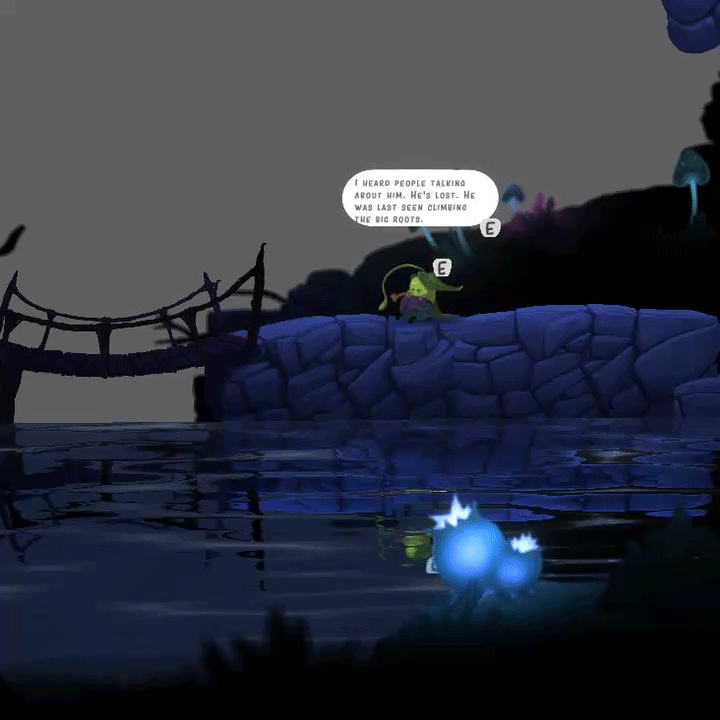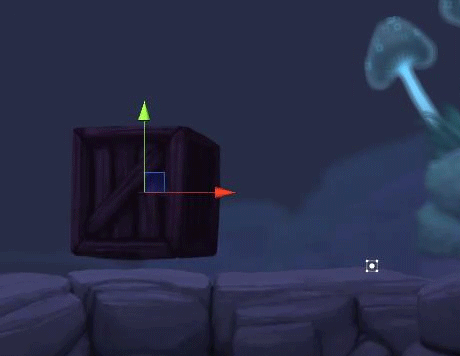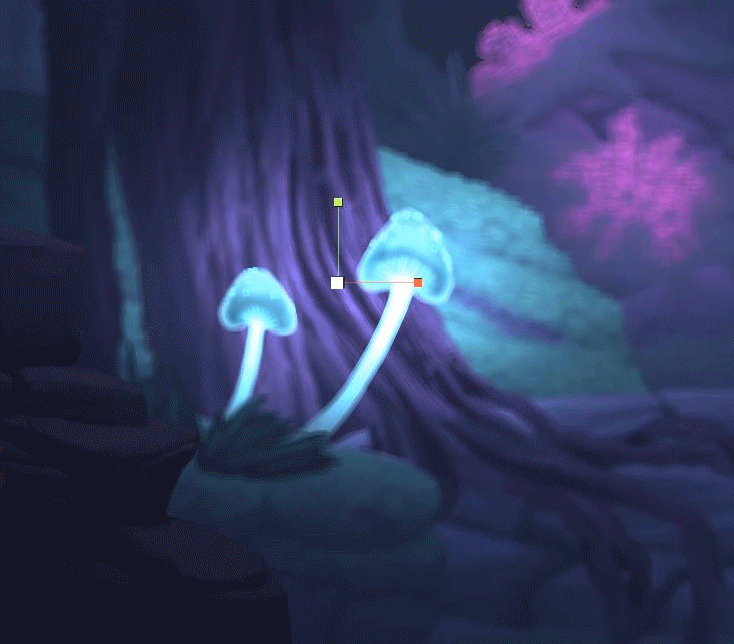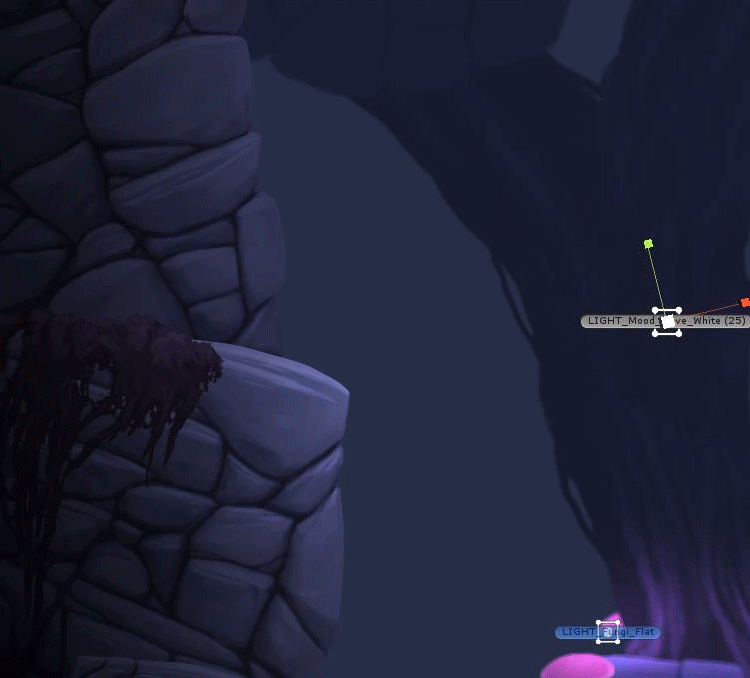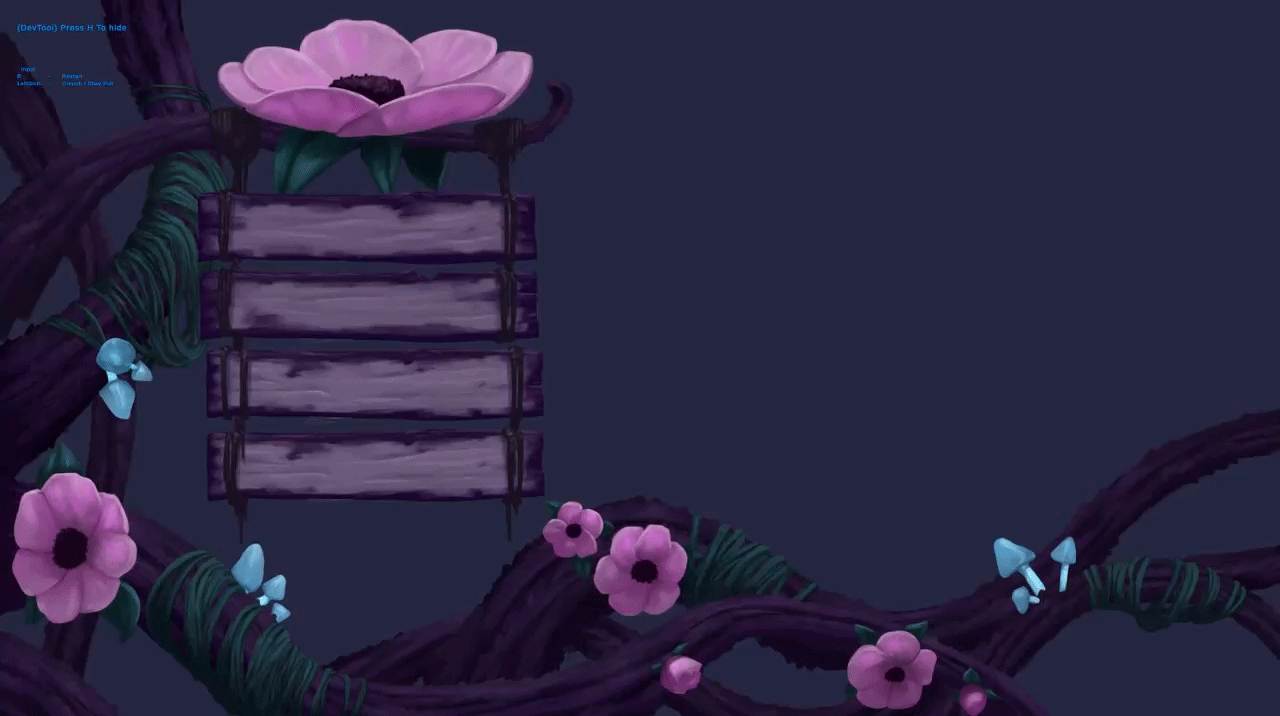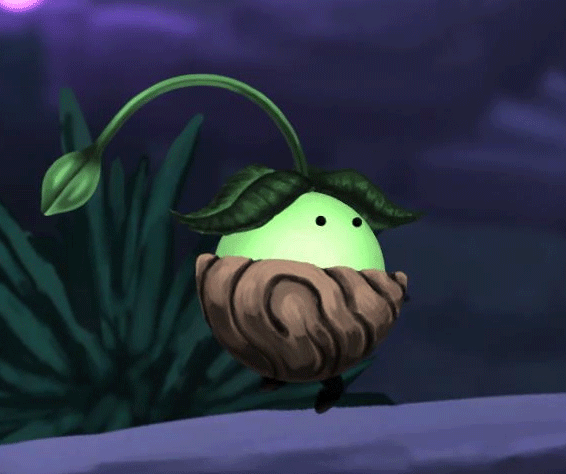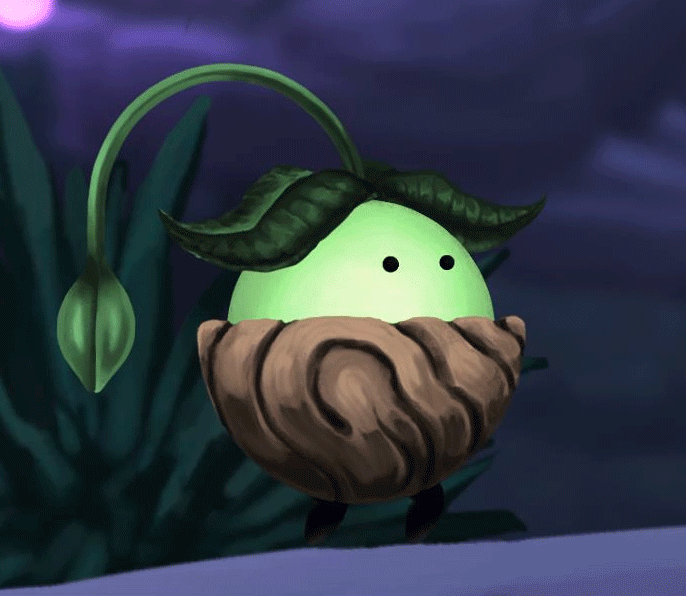Unrooted
Art direction, set dressing and technical art
Unrooted
Unrooted is a precision platformer “Foddian” type game currently in development. It is financed by one of the biggest influencers on livestreaming platform Twitch.tv with over 2 million followers, averaging between 30 to 40 000 active viewers on a daily livestream, giving the game a huge starting audience preparing for release.
Among the 8 other developers, I work as a “sort of” art director, but mostly level/set dresser and technical artist, leading the artists and making sure our game is reaching the correct visual identity we’re aiming for, while also making sure it will actually work and be efficient. Basically, I do everything visual that isn’t the actual drawn sprites - so set dressing, lighting, rendering, shaders, animation, rigging and much more.
This game is my dear-hearted passion project, and I’ve been working on it since 2020. I’ve had very extensive responsibility to keep it alive, with many ups and down along the way, and I’m extremely glad to say we’re almost done.
It’s probably my greatest work ever in environmental art/lighting/set dressing, with the 2D art being drawn by my fantastic co-workers Adam and Courtney. Something out of the usual, as I’ve never done 2D games before this one, only focusing on 3D.
You can find it on Steam. Wishlist it! https://store.steampowered.com/app/2441100/Unrooted/
And follow our Twitter:
https://twitter.com/unrootedgame
Below here is some older content I’ve kept on my website, felt it’s still relevant. (See how different it used to look!)
World space background, foreground and middle ground layouts
Some background information
Unrooted is being developed in Unity with the universal 2D render pipeline. However, it is using a 3D world space, meaning the game is “2.5D”, using the world space to parallax layers more accurately, creating a more immerse feeling, while also giving more freedom for creation.
Distance shader blurring
Like traditional 2D art layouts, we’re using a foreground, background and middle ground, placing the character in the middle ground. Instead of heavy post processing depth of field effects, we’re using a shader solution to automatically blur sprites depending on their -z placement in the world. As an extra layering strength, we can use sorting layers to decide what goes on top of what.
Using basic sprite sheet layouts, we can create seamless tileable assets to build up the world while maintaining low draw calls. To add a better depth to these assets, they are painted in a way to look like they have depth in them, and then using a masked light map to only light certain areas of assets with light sprites. The level is built up with traditional whiteboxing and then being overlayed with a set dress of these assets. Since the purpose of the game is to be precise and climb vertically, a smooth flat surface isn’t necessary, giving us more room for bumpy, natural looks on terrain, making it easier to dress.
Light masks with black to white information deciding intensity received on sprite
Animation is managed through vertex position shading on static assets like flora in the scenery, and through 2D rigging with the built in unity tools on characters and similar assets that need bones for more accurate movement. This means we don’t need to utilize any third party tools at all - other than art programs for painting sprites.
“Sappy” the main character running animation and idle animation
If you’re interested in hearing more about the development and what my part in it has been like, I’ll be happy to answer your questions. Send me an email and let’s talk!







